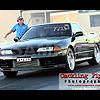Oil Control In Rb's For Circuit Drag Or Drift
Announcements
-
Similar Content
-
Latest Posts
-
Further result update. This is from our ATR43SS3 model in T3 .63 rear housing, run against None Geninue G30-770 and 900 spec turbochargers in T3. 82 turbine housing. Those turbos are ideal for RB25det motors, Since I've got a bullet proof RB30det, its been used as test bed instead. All three turbos run to a point that no more boost could be held and no more power could be made. Same test car and exact vehich setup as been used testing all three turbos:
-
So after having a think about what I was going to do I went with the banjo fitting option. As I'm in New Zealand I end up getting all the bit from Franklin performance for $200. Its better than the what I had before, but will have to put some tape around the ducting and once the car is going will send it and see how it goes 🏎💨🤙.
-
if you want them perfect you will need to strip and repaint (or better, powder coat). They look fine for most use though to me fixing light to medium gouges in the rim is pretty straightforward, can be done on a big lathe, or even on the car, on a hoist with tyre off. deep gouges get bog, no other option really
-
Hey just wondering how does the car drive now with the 4.11 gears now, was there any problems driving with the R33 A-lsd? Also did you upgrade the front diff when you changed to 4.11 gears?
-
If it's all just in paint, then....yes. Sort of. Depends on what you mean by "easily". Complete strip and powder coat? Easy. It's just you hand the wheels and a stack of coins to the wheel guy and they come back fixed. Damage to the alloy? Not easy. Still doable. Same basic method. Wheels + money to the wheel guy.
-







Recommended Posts
Create an account or sign in to comment
You need to be a member in order to leave a comment
Create an account
Sign up for a new account in our community. It's easy!
Register a new accountSign in
Already have an account? Sign in here.
Sign In Now